Both spring, and summer are enjoyable times of year for birding in the Couchiching area. From pine-oak barrens of Matchedash, and the shrublands of Carden Alvar, to moist maple forests around Awenda and Oro Moraine, the region provides a wide variety of habitat types, allowing birders to observe a large selection of Ontario’s breeding bird species, including a vast selection of wood-warblers, vireos, and flycatchers. Birding is one of North America’s fastest growing recreational activities, helping garner stronger interest in the conservation of key habitats around Lake Couchiching and throughout the Great Lakes region.
The last time I visited the region was in late September (for Ontario Nature’s Annual Youth Summit, which takes place on the shores of Lake Couchiching). This is a time when the hardwood trees were starting into their colorful autumnal foliage, and many migratory songbirds were on their way south. By the end of October, only resident and wintering bird species remain in Couchiching, some of which I will describe in this article.
Although less popular, there are many perks to birding in the winter. For one, many of the dominant hardwood trees are defoliated, eliminating the foliage cover that obscures summer birds from naturalists. There are also no biting mosquitoes, a nuisance nearly ubiquitous in the Great Lakes region during the months of June and July. Some of the best birding photography opportunities occur on sunny winter days where direct sunlight and snow provide the ample lighting needed for high-quality media.
Though there are less species present in Couchiching during the winter months than the summer months, the species that remain present tend to be much more appreciated during the months of winter. Common species include Northern Cardinals, American Robins, Finches, Chickadees, Nuthatches, Brown-creepers, Kinglets, Dark-eyed Juncos, Tree-sparrows, Woodpeckers, a variety of Raptors, and Corvids (of which 3 regularly occur, the Blue Jay, American Crow, and Common Raven).
Woodpeckers (Family Picidae)
It is very common to encounter woodpeckers during winter hikes anywhere in the Great Lakes region. Six species are native to the Couchiching area – (Downy Woodpecker, Hairy Woodpecker, Red-bellied Woodpecker, Red-headed Woodpecker, Pileated Woodpecker, Yellow-bellied Sapsucker and Northern Flickers), and all of these species except Flickers can be witnessed in the winter. On many occasions, woodpeckers will be foraging on trees, looking for their preferred food source – insect larvae. These can be in the form of beetle larvae, which include the invasive Emerald Ash Borer, and woodpeckers help substantially reduce Ash Borer populations (though often not below levels needed for tree survival, especially in more southerly regions). Woodpeckers will also visit bird feeders if suet or peanuts are offered.
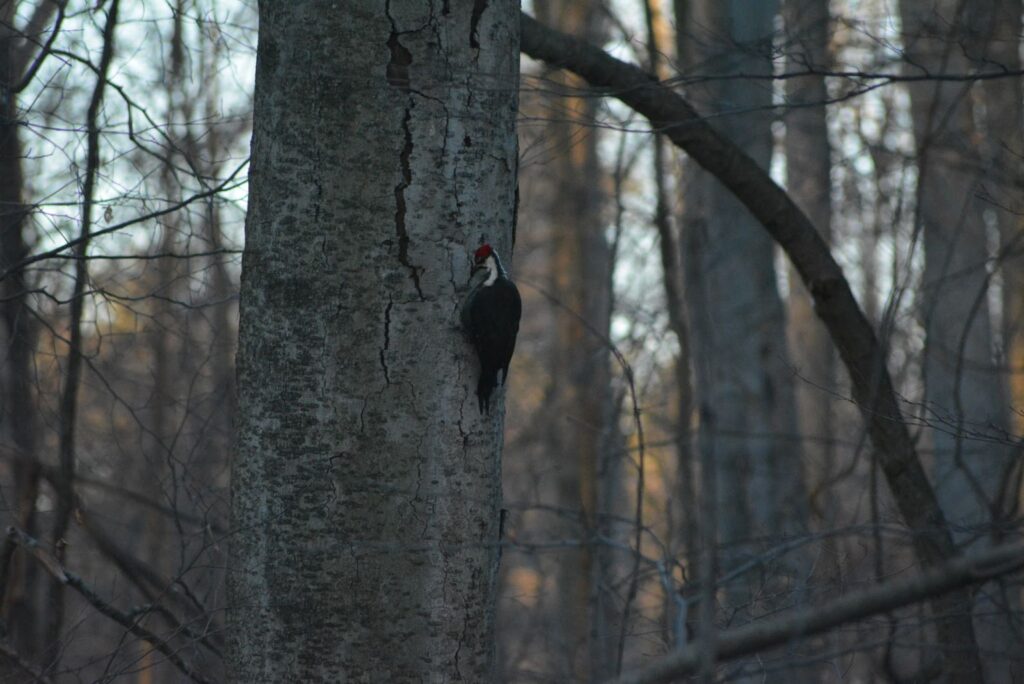

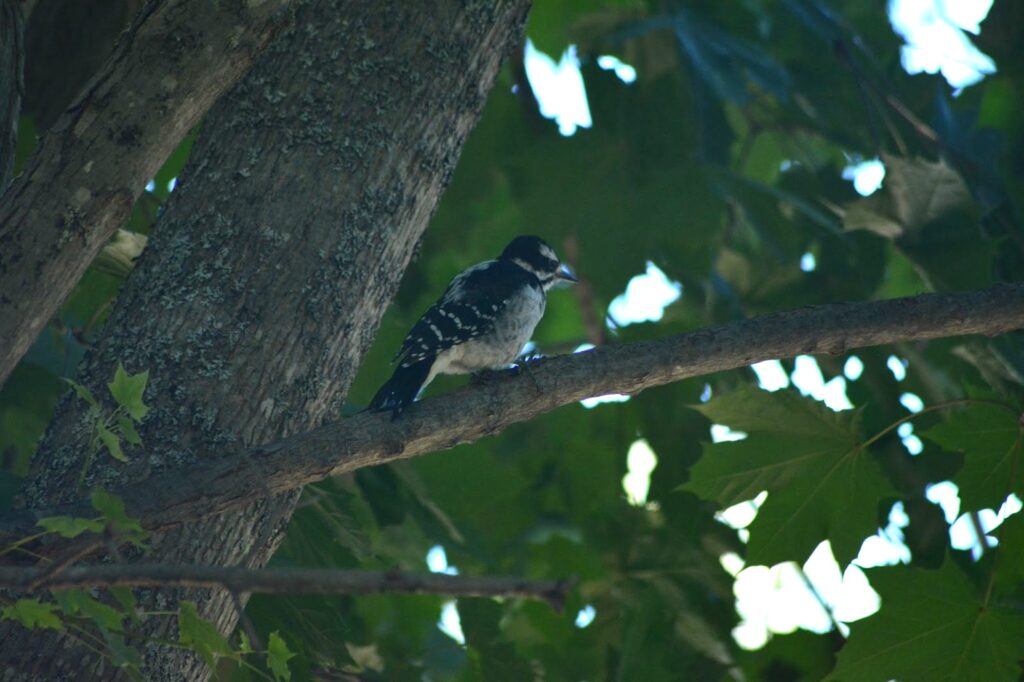
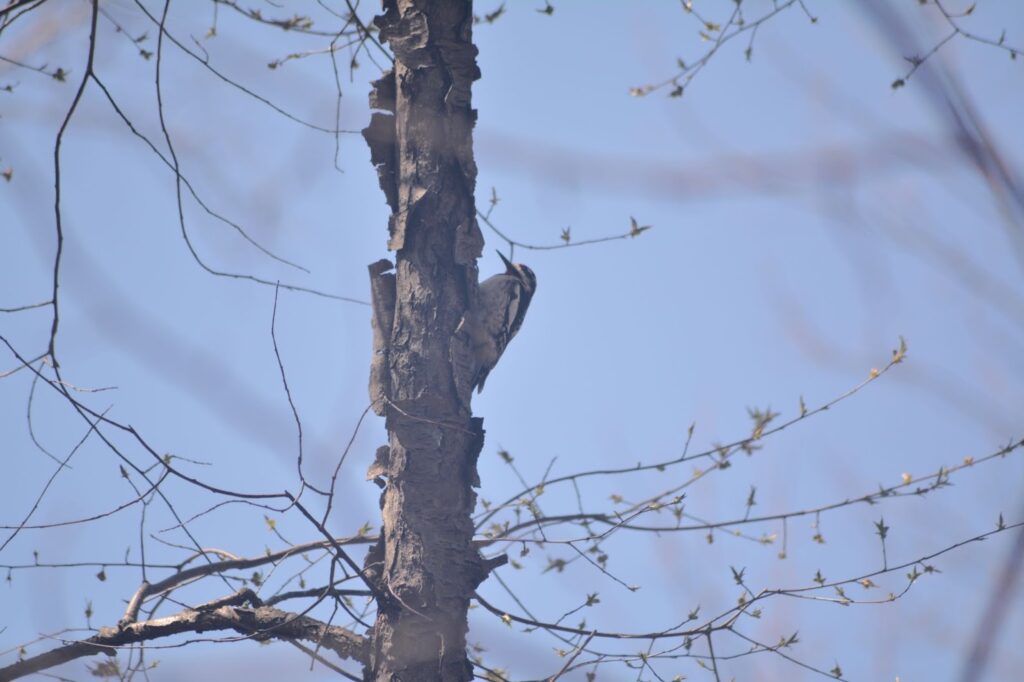
Northern Cardinal (Cardinalis cardinalis)
Northern Cardinals are another common winter species in the Couchiching area. They are easily identifiable – the crest and bright reddish plumage on males is unique among Ontario birds. The female is similar in physical appearance, but dull-brown to yellow in colouration. Cardinals have a varied diet, but fruits and grains are most consumed. Male Cardinals especially make for good pictures when photographed against the evergreen needles of spruce or hemlock.
Cedar Waxwing (Bombycilla cedrorum)
Superficially similar in physical appearance to female Cardinals are Cedar Waxwings, but they are different in two key aspects. Cedar waxwings are cream-like beige (a similar color to many candles), while female Cardinals are pale-yellow to light-brown. Additionally, waxwings are smaller than Northern Cardinals, measuring only ~17 cm long, as opposed to ~22 cm long in Cardinals. Cedar Waxwings mostly eat fruit in the winter, though in the summer, they are also insectivores. Many species are regularly consumed by Cedar Waxwing, including Elderberries, Crabapples, Winterberry, Serviceberries, and Dogwoods. In late winter, Waxwings can often be found in flocks consuming leftover fruit, especially around invasive Buckthorn shrubs.
Black-capped Chickadee (Poecile atricapillus)
Black-capped Chickadees (Poecile atricapillus) are another common songbird, found in the Couchiching region in all seasons of the year. They are small songbirds, at 12 cm in length, and are readily identifiable by their black cap, black throat, beige underside, grey back, and dark grey wing, including the wing. Chickadees live in any habitat that has substantial woody vegetation cover – these include forests, swamps, shrublands and suburban areas. Throughout the winter, Chickadees often forage for insects (especially larvae and pupae), as well as plant material (i.e., fruit, grains etc).
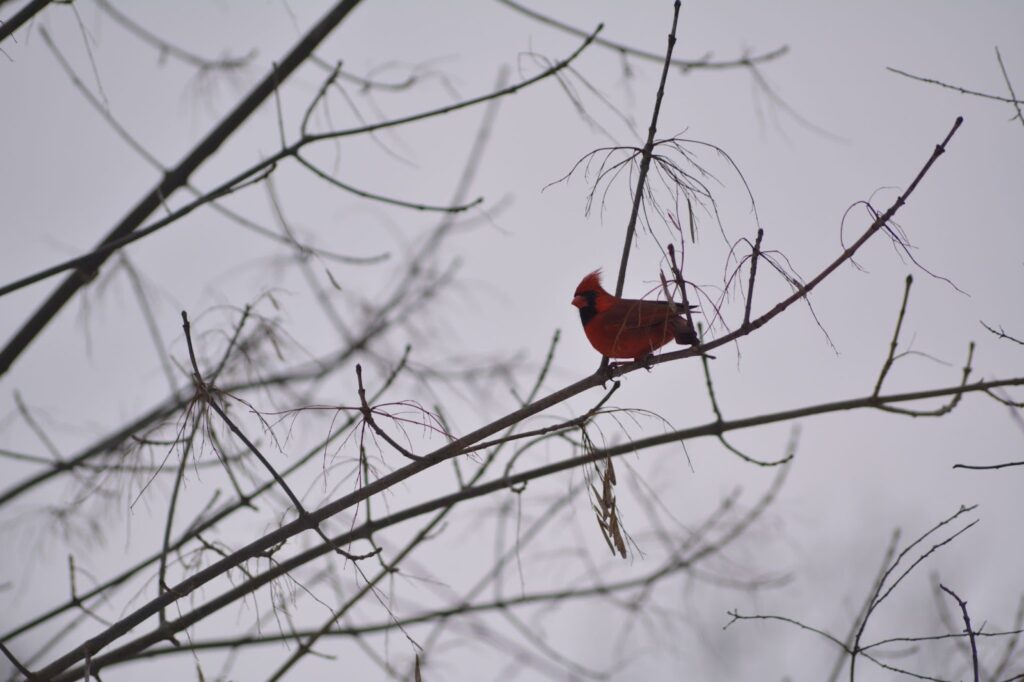
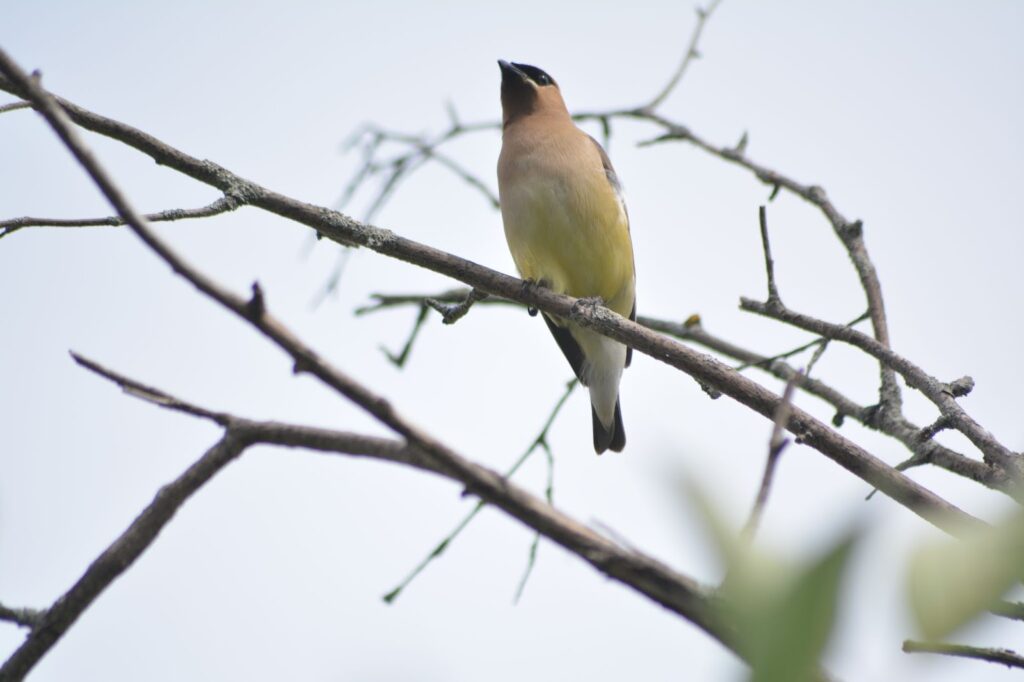
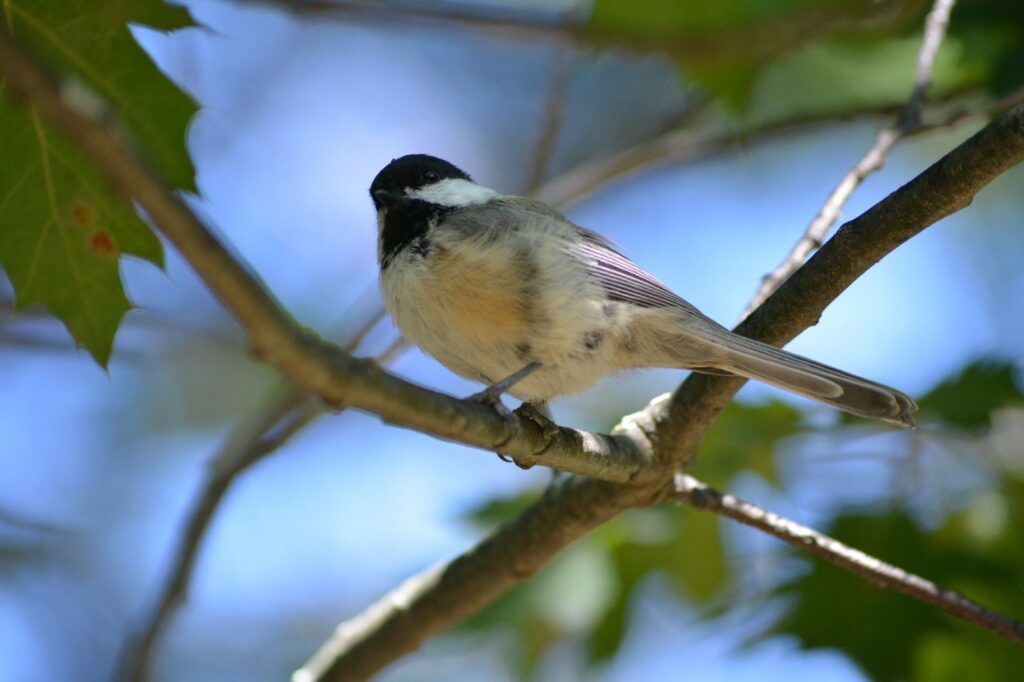
Nuthatches (Sitta sp.)
Nuthatches often occur in many of the same areas as Chickadee. There are two species of Nuthatches – the Red-breasted Nuthatch (Sitta canadensis) and White-breasted Nuthatch (Sitta carolinensis). Both species of nuthatches have elongated bills, and appear mostly grey on the back. However, Red-Breasted nuthatches are smaller (11cm for Red-Breasted Nuthatches, as opposed to 15cm for White-Breasted Nuthatches), and also have a distinctive black eyeline, as well as a reddish underside. The Red-breasted Nuthatch also has a substantially higher-pitched call than the White-breasted Nuthatch. These birds forage up and down the trunks of large trees, looking for their preferred food source – insects. Nuthatches and the Black-and-White Warbler are the only birds in the Great Lakes region that are able to climb down trees headfirst.
Brown Creepers (Certhia americana)
Though they occur year-round in Couchiching, Brown Creepers tend to be more visible to naturalists in the winter months (when the lack of foliage in the canopy allows sunlight to penetrate the understory and forest floor). Brown Creepers are very small songbirds, measuring only 11 cm in length. Both sexes are brown on the upperside (back), and white on the underside. Brown creepers are seen foraging for insects up tree trunks, but do not travel downwards headfirst (unlike Nuthatches). Instead, they fly to the base of another tree when they have reached the top of a tree trunk. Brown Creepers are typically found in mature hardwood forests, which is their preferred breeding habitat.
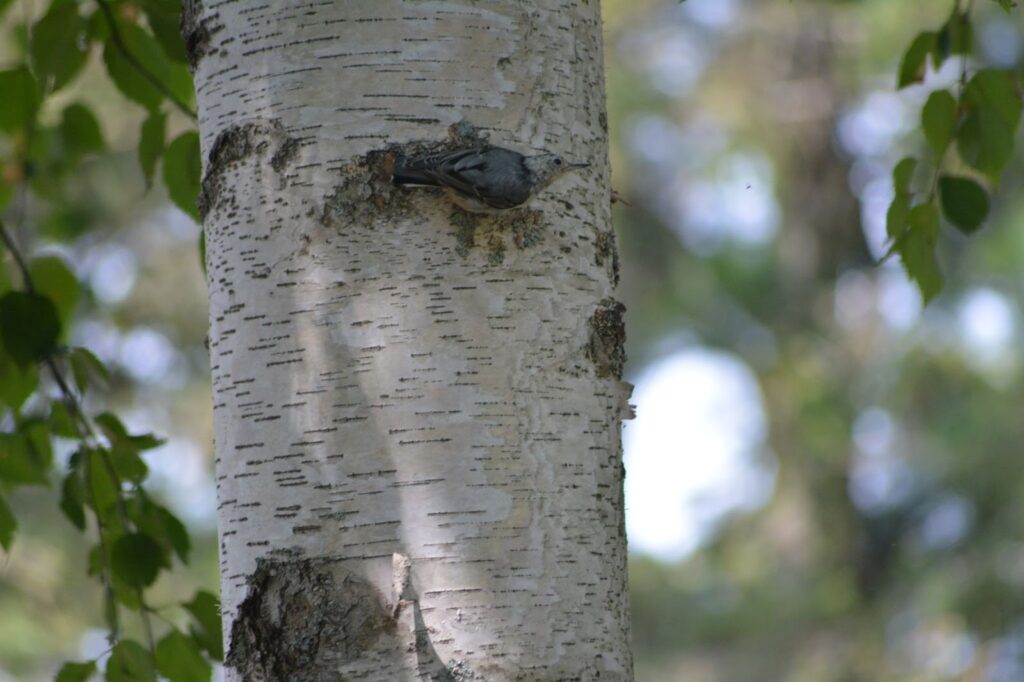
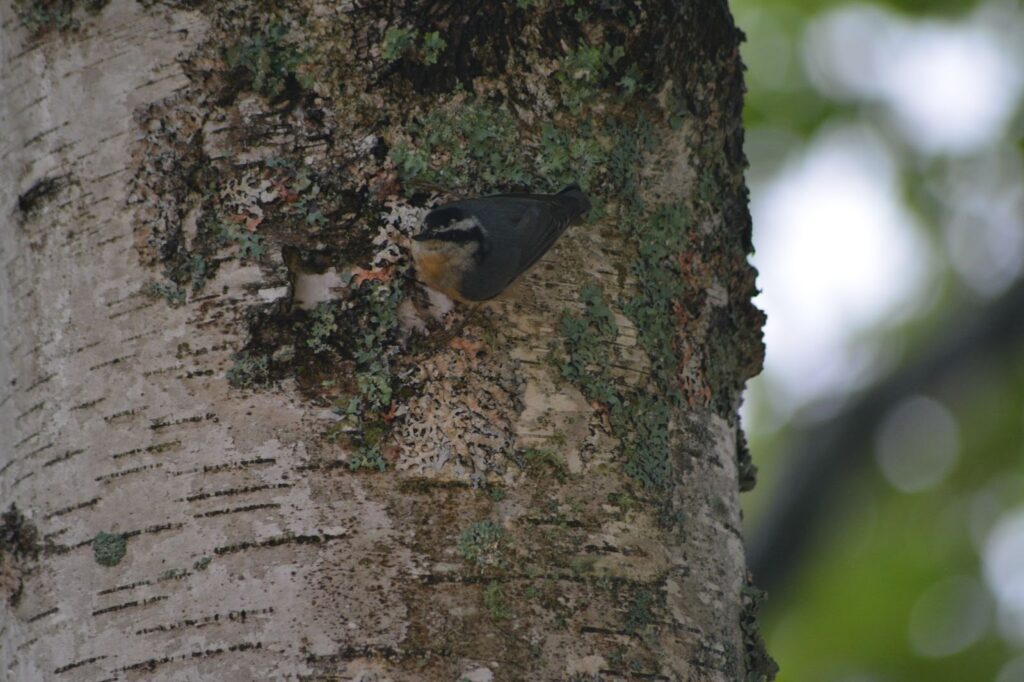

American Tree Sparrow (Passerella iliaca)
The American Tree Sparrow (Passerella iliaca) is a common species of sparrow wintering in the Couchiching area. In the summer, Tree Sparrows will breed in areas of mixed boreal forest and barren-ground, also known as the Taiga. Tree Sparrows are a small songbird (~15 cm in length). Most individuals have a mottled brown back and a beige underside. Distinctive features include a red-brown cap and eyeline, as well as one or two white wingbars. Their preferred food source is seeds.
Dark Eyed Junco (Junco hyemalis)
Dark-Eyed Juncos are a medium-distance migrant in North America, with a breeding range in the Canadian Boreal Forest and a winter range in the Eastern United States. They are similar in size to a Tree Sparrow, measuring 15 cm in length. Since the Couchiching area is at a junction between northern and southern ecosystem types, Dark-Eyed Juncos are present year-round. Dark-eyed Juncos have significant morphological variation across North America, but in the Great Lakes region, they are almost entirely dark-gray, with a white underside and a beige bill. Juncos are the original “snowbird”, before this term was applied to Canadian vacationers in Florida


Blue Jays, Crows, and Ravens (Family Corvidae)
Blue Jays (Cyanocitta cristata) are large blue songbirds (Passeriformes), averaging ~26cm in length. Throughout autumn, they can often be seen in flocks foraging for seeds, such as acorns, hazelnuts and beechnuts, in the forests around Lake Couchiching. Blue Jays will also readily frequent bird feeders, with peanuts and sunflower seeds being their among favorite foods. In the summer, insects are also consumed by Blue Jays.
Crows (Corvus brachyrhynchos) and Ravens (Corvus corax) are very similar in appearance, adults of both species are very large in size and all black in colouration. Ravens are substantially larger (up to 65 cm in length, as compared to 45 cm in length in Crows). In addition, Ravens have a lower pitched call than Crows. Although Ravens and Crows have a reputation for eating carrion (including the insect larvae within the carrion), they also will consume plant material. Both species are among the most intelligent of all birds.
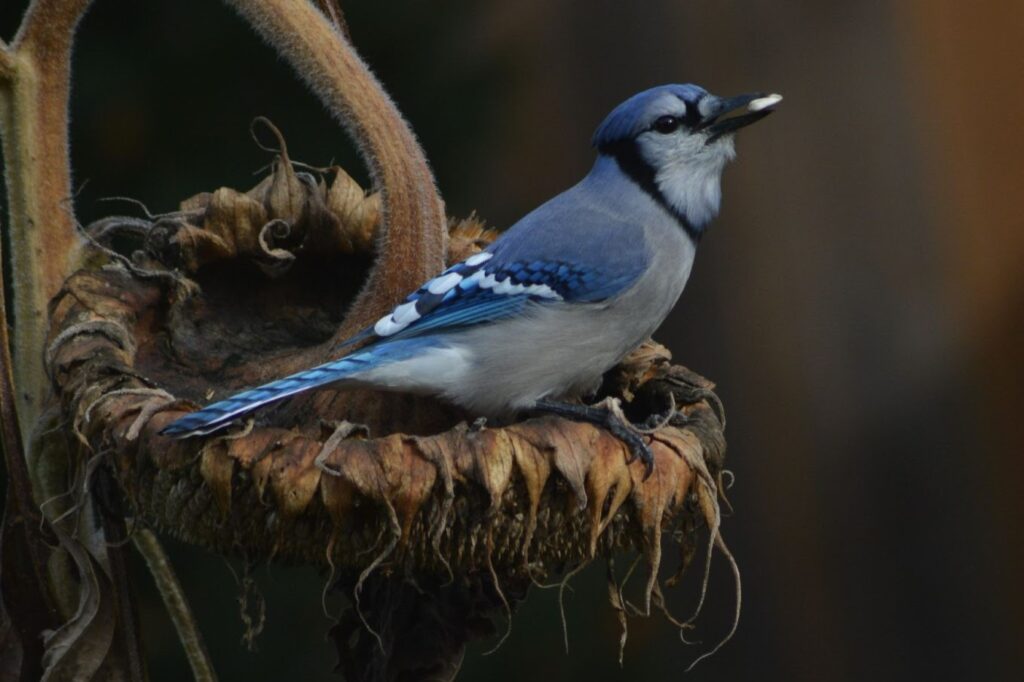

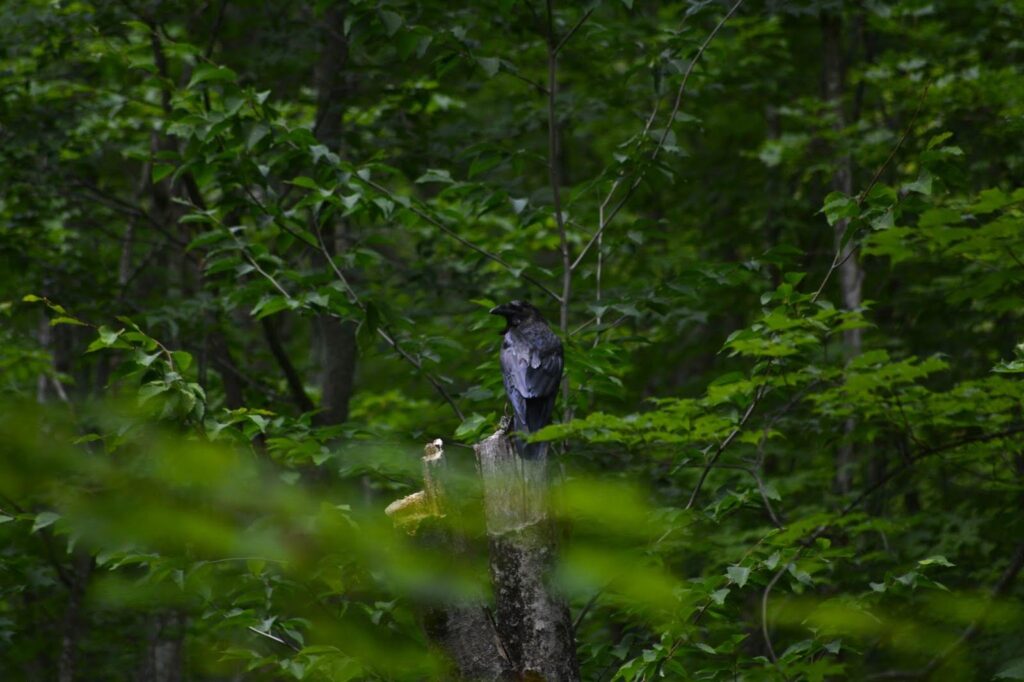
Article and photos by Matthew Palarchio

Matthew Palarchio is currently in his third year of studies at the University of Western Ontario (pursuing an Honours BSc in Environmental Science). Matthew is a dedicated volunteer at several conservation organizations across Ontario, including Thames Talbot Land Trust, Long Point Basin Land Trust, and the Kensington Conservancy. He has previously been involved with Ontario Nature through their youth programme, participating in their Annual Gathering as well as their Youth Summit. Matthew is currently serving as a Director-at-Large with his local Naturalist club – Nature London. Enjoying outdoor activities in all seasons, Matthew is a hiker, skiier, birder and wildlife photographer.

